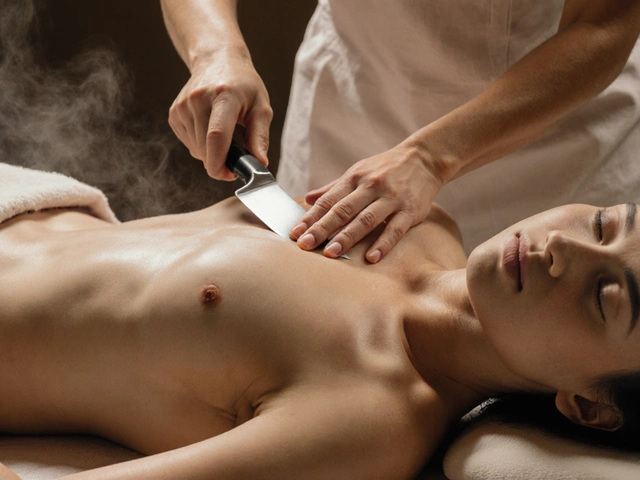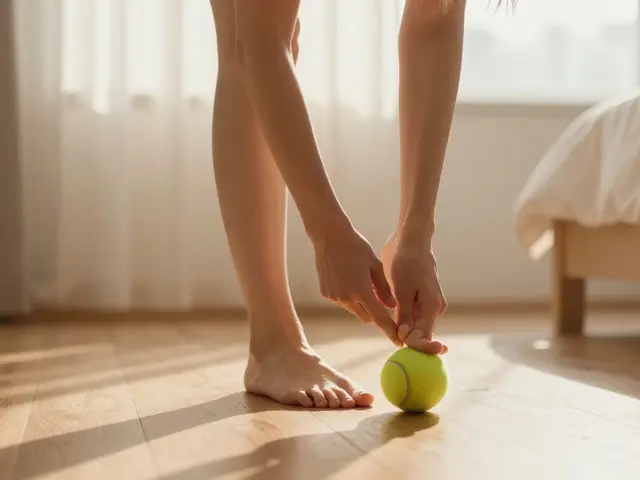Natural Health: Simple, Practical Massage & Bodywork Tips
Sore muscles, bad posture, or neck tension—what if a few natural health moves could make your day much better? You don’t need fancy gadgets. Hands-on therapies and gentle bodywork often give fast, useful relief. Below I’ll point you to what works, who to see, and easy things to try at home.
Which therapy fits you right now?
Think about your main goal. Want faster recovery after exercise? Look into Amma massage or warm stone therapy for muscle relief and relaxation. Dealing with long-term pain or posture issues? Hellerwork, Rolfing, or Feldenkrais training focus on alignment and movement. Need a cultural, gentle touch? Hilot or Lomi Lomi bring traditional rhythm and whole-body relaxation. Curious about targeted relief? Trigger point massage and cupping can help stubborn knots and local pain. Check article titles on this page like "Hilot Massage" or "Trigger Point Massage Therapy" to learn more about each method.
If you’re coping with chronic pain but want a gentle option, Ortho-Bionomy shows how tiny, pain-free movements let the body relax and self-correct. For end-of-life comfort, palliative massage focuses on calm, pain management, and dignity.
How to pick a practitioner and what to ask
Start local and practical. Look for clear experience with the exact technique you want—not a generic massage. Ask: How long have you worked with this therapy? Do you have client references or certifications? Can you explain what a session feels like and what pressure you’ll use? Also tell them about recent injuries, surgeries, or meds—this changes what’s safe. A good therapist will listen and give a clear plan for treatment and follow-up.
Price and session length matter. Many bodywork plans need a short series (3–6 sessions) to show real change for posture or chronic issues. One session is great for stress relief and recovery, but structural changes take time.
Quick at-home steps that help between sessions: simple breathing and neck stretches, foam-rolling tight legs, using a warm compress for tense shoulders or cold pack for fresh inflammation. Try acupressure on your own: press the base of the skull or the web between thumb and index finger for short relief. Keep sessions short and consistent—5–10 minutes daily beats one hour of random effort.
Safety note: if you have deep vein thrombosis, uncontrolled high blood pressure, severe osteoporosis, or recent surgery, check with a doctor before trying deep pressure, cupping, or intense bodywork. Pregnant? Look for therapists trained in pregnancy-safe methods.
Want examples from real articles? Read pieces here like "Ortho-Bionomy Techniques for Sustainable Pain Relief," "Feldenkrais Training: Unlocking Mindful Body Movement," and "Stone Therapy Benefits" to match a method to your needs. Natural health isn’t one-size-fits-all, but with a clear aim and the right practitioner you’ll get real, usable results.

Acupressure Benefits: Surprising Ways It Boosts Your Wellbeing
Discover unexpected perks of acupressure. From easing stress to tackling headaches, see how a few simple moves at home can level up your health.
Categories
- Health and Wellness (148)
- Alternative Therapies (86)
- Massage Therapy (40)
- Travel and Culture (15)
- Beauty and Skincare (9)
- Holistic Health (8)
- Health and Fitness (5)
- Spirituality (5)
- Other (2)
- Personal Development (2)



